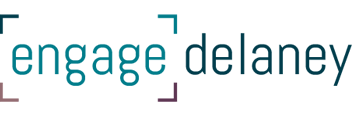Three Engagement Lessons from the Heart of Congo

The chief of Lobalu presents his group’s results chain on potential strategies for improving health care in his community.
As I look down from my seventh story, floor-to-ceiling glass windows it seems a dream that this time last year I was the Director of Operations for a forest conservation project in the heart of the Congo Basin. And as I watch the office workers busy at their tasks in the building across from ours, I think about what my experiences and adventures have taught me that will guide me in my new role here at Engage Delaney.
Over the coming months, as I adjust to a new life in my hometown, I will likely continue to ponder the lessons and experiences I have brought home from the heart of Africa. But for now I will focus specifically on what I learned in the planning and facilitation of stakeholder engagement workshops – and how those learnings apply to engagement in Canada.
1. The foundations of a successful engagement are planning and communication. This is an obvious one, but in Congo being prepared and having good communication had another level of importance. When the method of communicating your workshops requires sending a messenger with a hand-written invitation letter across an often “angry” lake in a dug-out canoe to a village that is 10-50 km away on foot, then you better be darned sure you have your details planned out.

Everything needed for an engagement had to be packed and loaded onto boats to cross the lake to the various villages.
Workshop materials had to be purchased in the capital city, flown to our little town and then transported by us by boat and motorbike to the village workshop location. Facilitators had to know what roles they were taking on, what techniques they were using and have all their props ready, printed and packed. There was no Staples for forgotten supplies. And if handouts, attendance sheets, markers or pink flashcards were forgotten then that was it, they were not used.
Workshop attendees traveled for great distances by foot, bicycle and canoe. They needed to be informed beforehand of the content of the workshops and of how many representatives from the various stakeholder groups in the communities could attend. After the workshops, it was vital to communicate the outcomes to community members back in the attendees’ villages because everyone was concerned that decisions were being made without them.
While the logistics of an engagement in North America may be a little less extreme, I expect that sound communication and planning are still key components to a successful engagement event.
2. Plan your heart out, but always be flexible to last minute changes. While careful planning and preparation are key, you also need to roll with it when things go sideways. You must plan how the activities will flow, how long they will take and what materials are needed. But when a group has misunderstood the exercise and needs more time to catch up, or a village sent three representatives when you only budgeted food for two, or a storm rolls in and blows the corrugated roofing off focus group No. 3’s room, you need to be flexible and think on your feet.
Don’t let unexpected occurrences derail your engagement, and remember that it is often the unexpected conversations or events that lead us to real “a-ha” moments or breakthroughs.
3. Be creative to overcome barriers to access and participation. Holding a successful engagement in Congo (or doing anything for that matter) was an exercise in overcoming one seemingly insurmountable barrier after another. This wasn’t only true for us, the hosts or planners of the engagement, but also for the attendees. A three-day workshop meant three days where a fisherman was not in the lake getting fish to feed his family, or tending his crops. An evening capacity-building session for women meant that they had to organize dinner before, or have someone else cook it. Who would feed the baby? And then there are the issues of hierarchy and patriarchy. Women can’t present ideas in front of men. Fisherman won’t have better comments than chiefs. Pygmies aren’t entitled to opinions and children shouldn’t speak at all.
Ensuring our engagements were accessible for all stakeholders, and successful for the project, was a dance in accommodations. I bounced a woman’s baby while she presented her focus group’s results. The chief was separated from his constituents or none of them would speak. In order for women to feel comfortable expressing themselves they would be placed in separate groups from their husbands. Cultural norms needed to be respected, but if they were exclusionary then we found a respectful way to ensure all voices were heard.
Language barriers and education barriers needed to be addressed. Often sessions needed to be translated into three languages. We found that logic diagrams were unfamiliar and needed to be explained with concrete, village-level examples before the exercises could be completed for the engagement. We also brought the workshops to the people as much as possible, rather than expecting them to travel to attend.
Here in the western world, surprisingly similar challenges to accessibility exist. Time, work, children and transportation are all regular barriers to participation. As well, educational, cultural and language differences need to be respected.
What my experience has taught me is that you need to listen, but you also need to ask, watch, think and know your attendees, to make sure your engagements are as accessible as possible. And in the end, participants need to trust that you have done this.


